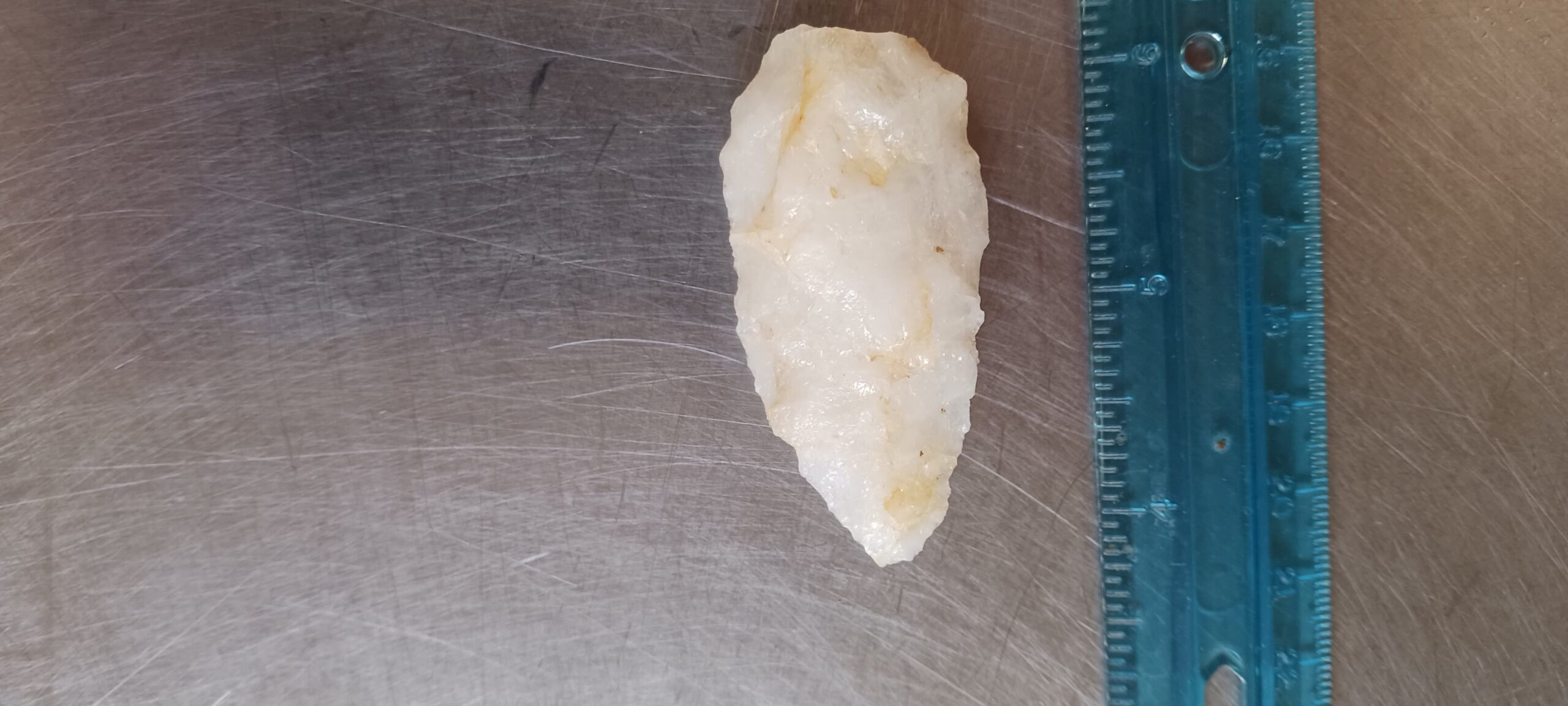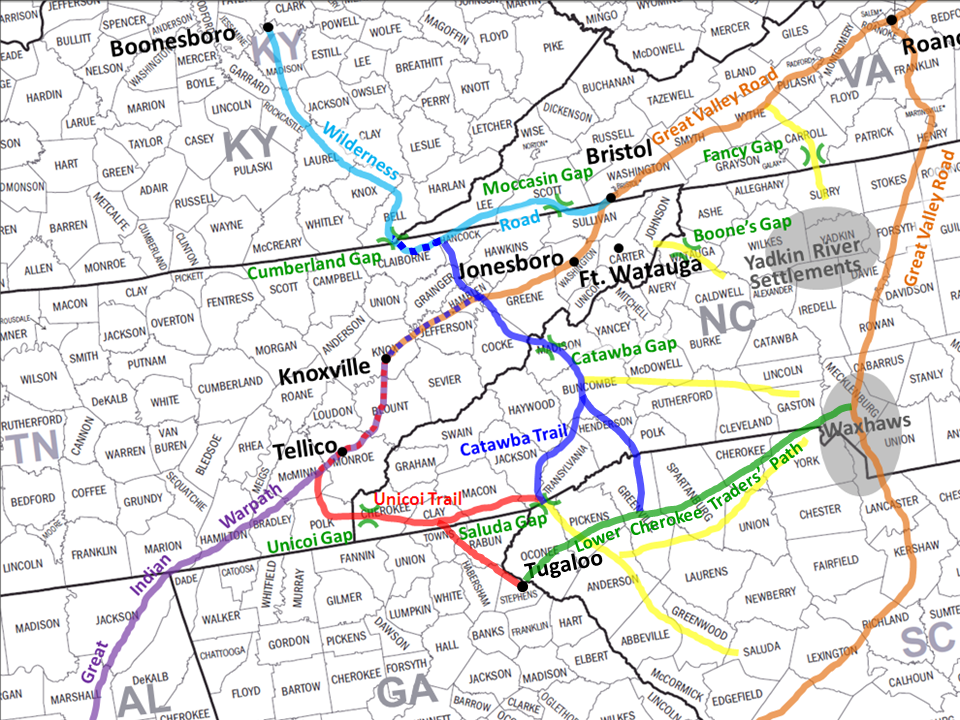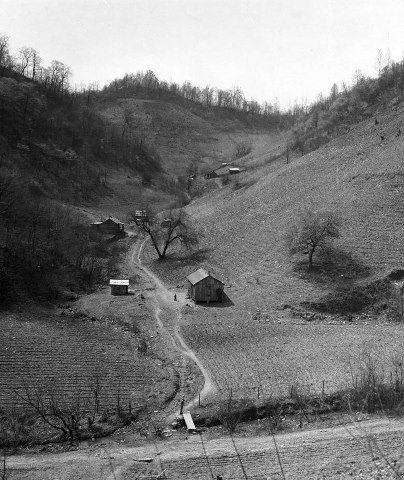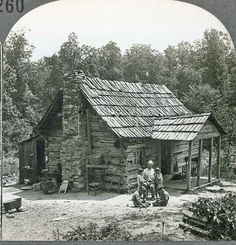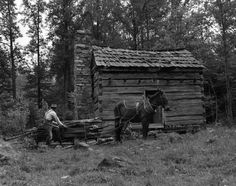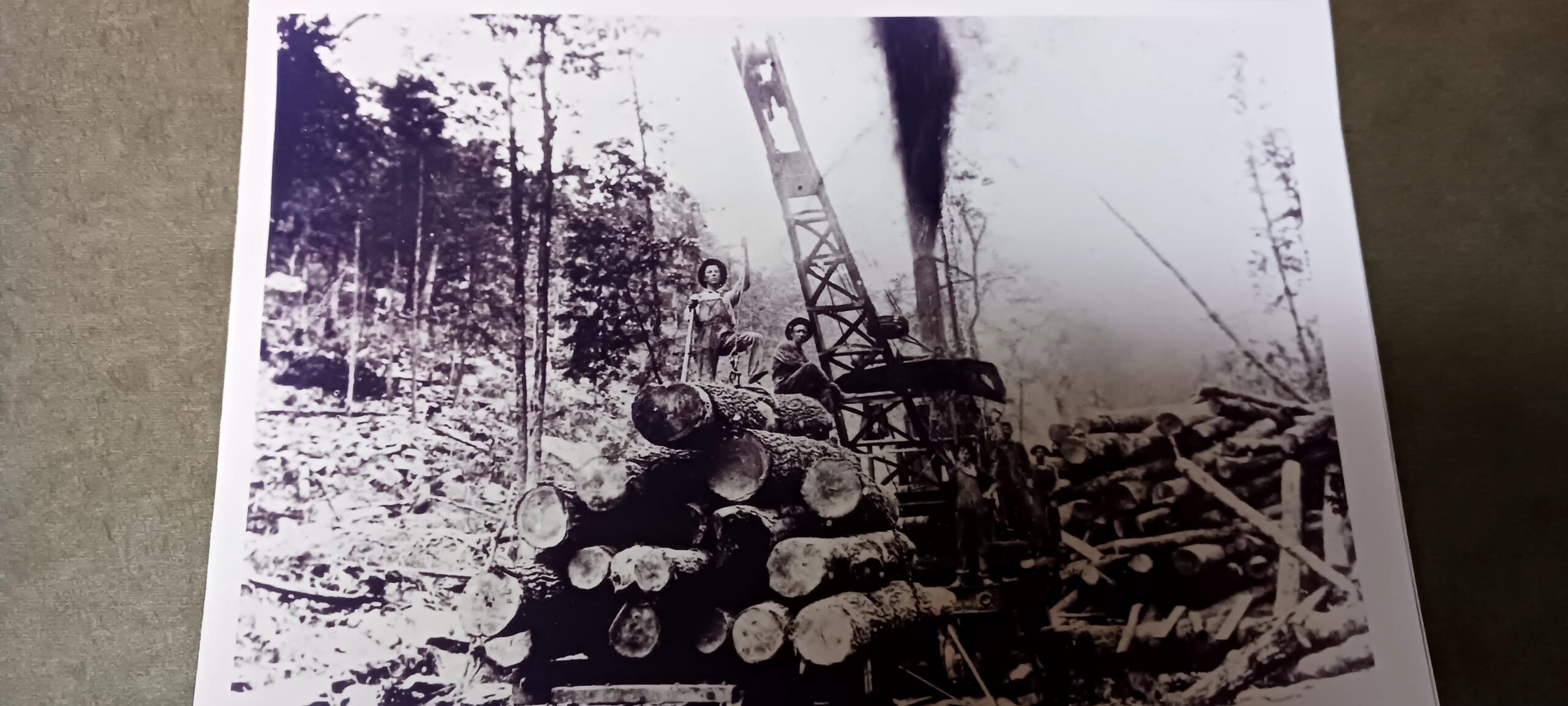History: The People and their Lives
Prehistoric
The earliest inhabitants of Tennessee are believed to have been Ice Age peoples descended from Asians who crossed the former Bering Strait land bridge more than twenty thousand years ago. These peoples were of Paleo-Indian culture, and like their Archaic successors, they lived primarily by hunting and gathering. The Great Valley offered a wonderful opportunity for them to survive. A moderate climate, extensive hunting and fishing opportunities, and abundant materials for shelter. The forests that covered the valley were rich with tree nuts from American chestnuts, hickories, walnuts, oaks, American beech, and abundant fruit from Blackberries, Raspberries, Dewberries, Wild Strawberries, and others. Fruit-producing trees and shrubs such as Mulberry, Wild Cherry, High and Low Bush Huckleberries, Sparkleberry, Elderberries, Gooseberries, and others also abound. Spear points have been found in the Hollow that prove that they hunted in the area. Several years ago, I found a quartz spear point along the creek in the Hollow That spear point has to be thousands of years old.
Historic
I speak in terms of historical knowledge when I mention the indigenous peoples of East Tennessee. What we know is based on 1. The early settlers who came through the Cumberland Gap into this area looking for land and hunting grounds:, 2. Those who came from the South or North up or down the Tennessee River or the Mississippi and other tributaries, and 3. Those who came from the coast from North and South Carolina some via the Unicoi Trail which is just east of here coming through the Coker Creek area or from the Jonestown area. There were approximately 7 tribes in the colonial Tennessee area: the Muscogee (Creek), Yuchi, Chickasaw, Choctaw, Cherokee, Shawnee, and Seneca. Please see the map below showing the main trail routes into East Tennessee.
The Cherokee
At one time, the Cherokees occupied a greater territory of the United States, but it was not unusual for one tribe to drive out another from an area and this is why when English traders began trading with The Cherokees in 1673, there were only three primary groups: The Overhill Cherokees who lived on the western side of the Appalachian Mountains and concentrated along the Little Tennessee River down to South East Tennessee; The Middle Cherokees who occupied the mountainous regions of east Tennessee and western North Carolina; The Lower Cherokees who lived in northern Georgia, Alabama, and South Carolina. William Bartram, an American botanist, ornithologist, naturalist historian, and explorer traveled through what were then the Georgia, North, and South Carolina territories in the late 1700's.
The area west of the Appalachians and east of the Mississippi later became Tennessee. He documented his travels with beautifully done narratives of the plants, animals, and people he encountered as well as artwork of many of them. His encounters with the Cherokees are very interesting and show the intelligence and advancement of the Cherokees. The Georgia Historical Society's website has an interactive map that shows the approximate places Willam Bartram traveled (William Bartram Interactive Map).
Cherokee Removal
The largest removal of the Cherokees took place in late 1838 and was centered near here in Charleston, Tennessee. The removal followed a path just south of the Hiwassee River which is a few miles south of the Hollow and crossed at Blythe Ferry in Meigs County. Just on the other side of the North-East ridge on the Hollow, there is a mill race dug into the steep hillside. This race carried water for a Mill that was built for the Cherokees who occupied the local area in the early 1800's. By my information, it was built by an early settler in trade for hunting rights in the area. The old millstones were taken by a gentleman from Maryville, that I met several years ago.
European
Even before the removal of the Cherokee, the influx of European settlers was starting to make inroads into this area. The first explorations by Europeans in what is now Tennessee took place in 1540, when a Spanish expedition under the command of Hernando de Soto entered the region from the southeast in Florida. He had set out from Florida the year before with six hundred and twenty five men in search of gold and other treasures, hoping to duplicate the success of earlier Spanish expeditions in Central and South America. The exact route of the expedition through Tennessee is unclear, but it is likely that they crossed the Appalachian Mountains somewhere to the north of the Great Smokies and followed the French Broad River down to what later was southeast Tennessee. In 1969, I actually saw and handled a Spanish axe head that was found in Tennessee by a fellow forester. The early fur trade from traders coming from South Carolina had a significant impact on Tennessee’s native animal life. In the early 1700's the fur traders lived among the Cherokees and used them to hunt and trap beaver skins, deer pelts, and other skins. These were shipped downriver to New Orleans or carried on pack trains to Charleston, South Carolina. The Cherokees received cloth, iron goods, guns, and ammunition. Many of these traders married and remained with the Cherokees. Daniel Boone was one of the first to cross into what is now Tennessee at Cumberland Gap near the junction of the Tennessee-Kentucky-Virginia border. He is recorded as having killed a bear near Jonesboro, Tennessee. The Cherokee's territories were continually reduced as White settlers and entrepreneurs purchased vast tracts of land from them in the northern parts of their territory. New settlers poured into the area from Virginia to the North, primarily through the Cumberland gap, but also from the Carolinas to the East some following the Unicoi trail through Etowah, Tellico Plains, and Coker Creek. Some settlers from Pennsylvania and New England poled keel boats from the Ohio River up the Cumberland and Tennessee Rivers. Most of these early settlers were of English and Ulster-Scottish origin, although some were of German, Irish, and French ancestry. The current residents who live near the Hollow area have names like Ward, McCracken, Givens, Monroe, Pierce, and Ford. Some of them claim Cherokee blood and many are related in some by marriage. The land was acquired by trading, by purchase, by squatting, and due to the War of 1812 many land grants were also given instead of cash. One of my ancestors, Fighting Billy Tipton, got a land grant and/or purchased large areas in Cades Cove and sold or passed them to his relatives. My Grandmother, Mellie Tipton, was born in Cades Cove. The Rhyne ancestors migrated through North Carolina and came to the area of Blount County in the early 1800's.
African-American
There has been a long-time ownership of property in the Hollow area by African Americans. Oddie Rucker, from Chicago, owned around two hundred acres adjoining the Hollow on the North side. Annie Swafford also owned a large tract a little farther North on County Road 82. Several of her relatives have visited the Hollow for several years.
Near the entrance of the Hollow, there is the footing of an ancient African American church and school. Nothing is left of the old log building and I am still looking into the church's history and the people who built and used it. Many years ago, I did find part of an old vintage phonograph one time near the site.
I still would like to look into the African American history of the area.
Agriculture
Except for the limited amount of creek and river-bottom farmlands, the majority of land in East Tennessee is more adaptable to timber, cattle farming, and hay production. Even the bottom land that has rich soil was susceptible to extensive flooding by the rivers and creeks that were uncontrolled by dams until TVA came into being in 1933 during the Great Depression. For many years the biggest cash crop was tobacco and even the smallest farmer would grow small patches for cash money. Tobacco was grown on the farms around the Hollow by most farmers. The labor to produce it was high. Nowadays, that crop is fading as the available labor to grow and harvest it has disappeared. As in much of the southeast much of the land was farmed till it was no longer viable as farmland. The steeper slopes and lack of conservation measures on much of Tennessee's farmland caused erosion of the topsoil and organic matter and nutrients. Even In the Hollow, with its somewhat steeper slopes, several areas were farmed. Once these were worn out new areas were used. The term “New Ground” was applicable throughout the southeast as new un-farmed ground was needed to replace the ground that was used up. Even in the un-farmed forested areas, hogs and cattle were released to forage for acorns and chestnuts as well as mushrooms and other food sources. Some landowners “Burned the Woods” to reduce the snake population and cause grass and other forbs to grow so cattle and hogs could forage.
Timber
Before the Cherokees were removed and before the large influx of Europeans from the Carolinas, Virginia. and other Colonies, the forest was removed to open land to agriculture and for homes and outbuildings. There was not a good way to transport logs or sawn lumber for any great distance so only very local markets existed until road systems were improved by the County, State, and Federal Governments. The Railroad changed the world for transportation beginning in the mid-1800s. The ET&G, chartered in 1848, revived the Hiwassee Railroad which had failed to materialize earlier. Running from Dalton via Athens and Loudon to Knoxville by 1855, it was the second railroad completed in Tennessee. A more direct route between Cleveland and Chattanooga was completed in 1858. The East Tennessee and Virginia (ET&V), chartered in 1849, was completed from Knoxville to Bristol in 1858, ending East Tennessee’s railroad isolation. But there was still no good way to move lumber or logs to sawmills or the railroad until the 1900's. Milling of trees for lumber could only be done by moving sawmills close to the source of timber, or in other words, the distance a team of mules or horses could economically pull the logs to. Numerous small railroads were developed specifically for timber/lumber, iron mining/smelting, coal, and phosphate transportation. The mountainous topography of East Tennessee led to the creation of unusually steep rail lines with Shea locomotives which were uniquely configured to accommodate sharp curves and steep grades. These railroads adopted narrow gauge (three feet) tracks and geared locomotives to access valuable but remote resources.
A perfect example of this is the Dinky Line that ran up Piney River in Rhea County. When I was exploring the Piney River area in 1973 for the Piney River Trail, I found that one of the concrete abutments for the rail crossing, where it crosses Piney for the first time, has the date of 1909 imprinted in the concrete. This railroad was used to harvest the timber from the Piney River drainage and there was also coal mined in some of the area. On one of many exploratory trips to determine a route for the Stinging Fork Pocket Wilderness trail, at the terminus of one of these Dinky line grades right above Stinging Fork Falls, something caught my eye that looked out of place. I walked over to it, and to my surprise, it was a pinch-point crowbar that had been used to build the Dinky Line. It had been standing there for all that time. It's now 115 years old. I carried it out and still have it. My Grandfather, Burl Whitehead, born in 1889 worked at one time for the Conasauga River Lumber Company. When I mentioned that I was developing trails for Bowater, he said that he was a trail builder for Mr. Dooley on the Conasauga River. He marked trails to be used for timber harvest in the early 1900's. Most of the timber in the Great Valley was still too far for the transport of timber to market until the advent of trucks and better roads. The timber in the Hollow was harvested in the 1940s. Whether it was harvested before that time is unsure but probably not except for some firewood.

